Potassium silicate (chemical formula: K2SiO3) is an inorganic compound known as potassium water glass or potassium sodium silicate, a common silicate. Potassium silicate is a colorless or slightly yellow solid with high adhesion and fire resistance, widely used in fields
such as construction, textiles, papermaking, ceramics, paint, medicine, etc.
1. Preparation of potassium silicate
Potassium silicate can be prepared by different methods, with the most commonly used method being the reaction of alkali metal silicates with hydroxides or alkali metal oxides at high temperatures. Specifically, sand, potassium hydroxide, or potassium carbonate are mixed and stirred evenly, heated to high temperature and reacted to obtain potassium silicate. Another preparation method is directly reacting silicon powder with potassium hydroxide to generate potassium silicate and hydrogen gas.
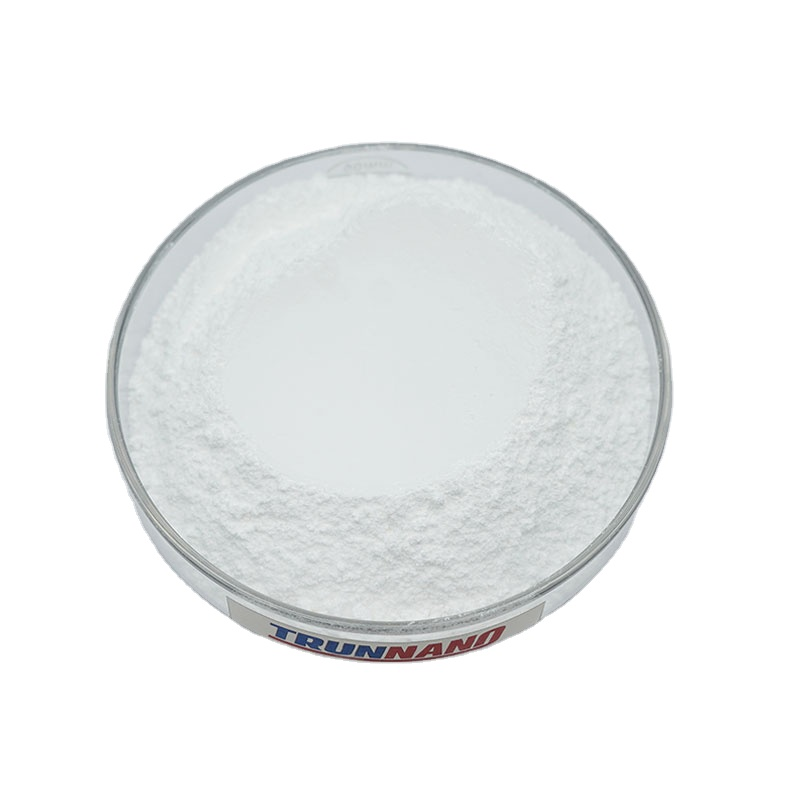
2. The properties of potassium silicate
Potassium silicate is an inorganic salt with a high melting and boiling point, insoluble in water but easily soluble in alkaline solution. The aqueous potassium silicate solution is alkaline, has strong adhesion and fire resistance, and can form a strong protective film. In addition, potassium silicate also has high thermal stability and weather resistance, which can maintain stability at higher temperatures and humidity.
3. The application of potassium silicate
Construction industry: Potassium silicate can be used to manufacture building materials such as concrete, cement, and ceramic tiles, improving the durability and strength of the materials.
Textile industry: Potassium silicate can be used as a sizing agent, finishing agent, and softener for textiles, improving their wear resistance, wrinkle resistance, and hand feel.
Paper industry: Potassium silicate can be used as a coating and reinforcing agent for paper, improving the printing effect and strength of the paper.
Ceramic industry: Potassium silicate can be used to prepare and process ceramics, improving the hardness and heat resistance of ceramic products.
Paint industry: Potassium silicate can be used as an additive in paint to improve its adhesion and weather resistance.
Pharmaceutical industry: Potassium silicate can be used for the Preparation and processing of drugs, such as in the Preparation of drug sustained-release agents and drug carriers.

Other fields: Potassium silicate can also be used in electroplating, glass, coatings, and other fields. In electroplating, the corrosion resistance of the electroplating layer can be improved; In the glass, the transparency and hardness of glass can be improved; In coatings, adhesion, and weather resistance can be improved.
4. Notes on potassium silicate
Storage: Potassium silicate should be stored in a dry, cool, and ventilated warehouse, away from sources of fire and heat. During transportation, it is necessary to prevent rain and moisture.
Usage: Potassium silicate has strong alkalinity and can irritate the skin and eyes. Protective glasses and gloves must be worn to avoid direct contact with the skin. In addition, potassium silicate aqueous solution is prone to moisture absorption, and contact with water vapor should be avoided during use.
Environmental protection: The production and use of potassium silicate can generate pollutants such as wastewater and exhaust gas, which have a certain impact on the environment. Therefore, effective environmental protection measures should be taken during production and use to reduce environmental pollution.
About RBOSCHCO
KMPASS is a trusted global chemical material supplier & manufacturer with over 12 years experience in providing super high-quality chemicals and Nanomaterials. The company export to many countries, such as USA, Canada, Europe, UAE, South Africa, Tanzania,Kenya,Egypt,Nigeria,Cameroon,Uganda,Turkey,Mexico,Azerbaijan,Belgium,Cyprus,Czech Republic, Brazil, Chile, Argentina, Dubai, Japan, Korea, Vietnam, Thailand, Malaysia, Indonesia, Australia,Germany, France, Italy, Portugal etc. As a leading nanotechnology development manufacturer, RBOSCHCO dominates the market. Our professional work team provides perfect solutions to help improve the efficiency of various industries, create value, and easily cope with various challenges. If you are looking for Potassium silicate powder, please send an email to: sales1@rboschco.com
Silicon nitride is an important inorganic non-metallic material with excellent physical and chemical properties, exhibiting excellent performance at high temperatures, wear resistance, corrosion resistance, and other aspects.
1. The properties of silicon nitride
Silicon nitride powder (Si3N4) is a ceramic material with a hexagonal crystal structure similar to silicon carbide (SiC). Silicon nitride has a high hardness, second only to diamond and silicon carbide, and has excellent wear and high-temperature resistance. In addition, silicon nitride also has good chemical stability and can maintain stable performance in high-temperature and corrosive environments.
2. Preparation method of silicon nitride
There are various methods for preparing silicon nitride, among which the most commonly used are reaction sintering and hot pressing sintering. The reaction sintering method uses silicon powder and nitrogen at high temperatures to generate silicon nitride. The advantages of this method are low cost, simple process, but low product purity. The hot pressing sintering method prepares silicon nitride ceramics by sintering the raw material powder at high temperatures and high pressures. The
advantages of this method are high product purity and excellent performance, but the process is complex, and the cost is high.
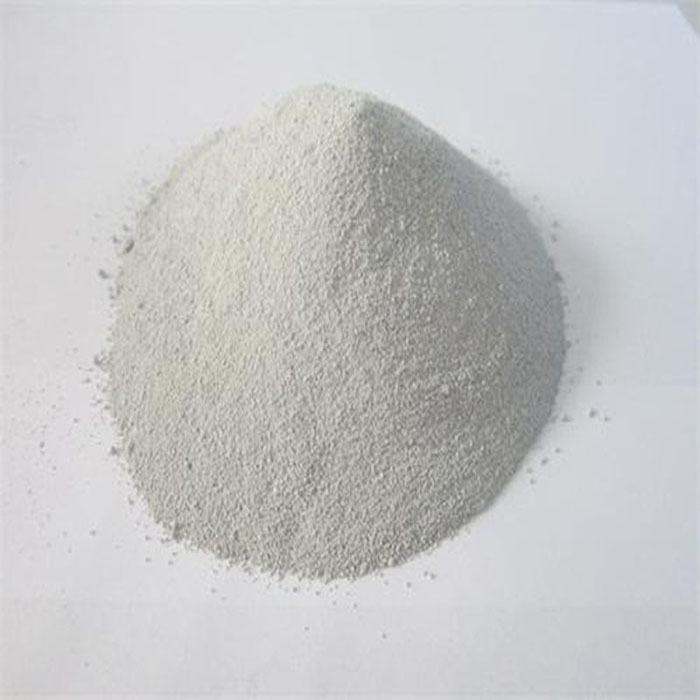
3. Application fields of silicon nitride
Mechanical seal: Silicon nitride is one of the important materials in the field of mechanical seals as to its high hardness, wear resistance, and high-temperature resistance. It can be used as a material for sealing rings, gaskets, bearings and other components, with a long service life and good sealing performance.
Automotive industry: Silicon nitride ceramic materials have excellent high-temperature and corrosion resistance and can be used to make automotive engine components, such as turbochargers, gas cylinders, etc. by the way, silicon nitride can also be used to make automotive brake and clutch pads with high wear and temperature resistance.
Silicon nitride has broad application prospects in the field of new energy, mainly manifested in the following aspects:
Solar energy field: Silicon nitride can be used as a support structure for solar panels, with high strength, high heat resistance, good insulation performance and stability. It can withstand the ultraviolet and thermal radiation of sunlight, ensuring the long-term stable operation of solar panels. In addition, silicon nitride powder can be used as a packaging material for electronic components of solar inverters, improving their reliability and stability.
In fuel cells, silicon nitride can serve as a supporting structure for fuel cells, with good corrosion resistance and high-temperature stability. In fuel cells, silicon nitride can withstand high current density and high-temperature environments, ensuring the long-term stable operation of fuel cells.
Wind energy field: Silicon nitride can manufacture components such as bearings and seals in wind turbines with high wear and corrosion resistance. It can withstand harsh environmental conditions and significant mechanical stress, ensuring the long-term reliable operation of wind turbines.
In the field of new energy vehicles, silicon nitride can be used as a component material for new energy vehicles, such as engine components, motor support structures, etc. Due to its high strength, high heat resistance, good insulation performance and stability, it can increase safety and reliability of the new energy vehicles.

Aerospace: Silicon nitride ceramic materials have excellent mechanical properties and high-temperature stability and can be used to make aircraft and rocket engine components, such as combustion chambers, nozzles, etc. In addition, silicon nitride powder can also be used to produce thermal protection materials for spacecraft and satellite solar panels.
Electronic industry: Silicon nitride ceramic materials have good insulation and stability properties and can be used to make electronic components and integrated circuit packaging materials. In addition, silicon nitride powder can be used to make supporting structures and heat sinks for electronic devices.
Medical field: Silicon nitride ceramic materials have good biocompatibility and stability and can be used to make medical devices such as artificial joints and dental materials. In addition, silicon nitride powder can be used to make structural components and support structures for medical devices.
Other fields: In addition to the above fields, silicon nitride ceramic materials powder can be used in the petrochemical industry, shipbuilding, sports equipment and other fields. For example, silicon nitride can make components like oil pipelines and valves. And to make high-end sports equipment such as table tennis rackets and badminton rackets.
About RBOSCHCO
KMPASS is a trusted global chemical material supplier & manufacturer with over 12 years experience in providing super high-quality chemicals and Nanomaterials. The company export to many countries, such as USA, Canada, Europe, UAE, South Africa, Tanzania,Kenya,Egypt,Nigeria,Cameroon,Uganda,Turkey,Mexico,Azerbaijan,Belgium,Cyprus,Czech Republic, Brazil, Chile, Argentina, Dubai, Japan, Korea, Vietnam, Thailand, Malaysia, Indonesia, Australia,Germany, France, Italy, Portugal etc. As a leading nanotechnology development manufacturer, RBOSCHCO dominates the market. Our professional work team provides perfect solutions to help improve the efficiency of various industries, create value, and easily cope with various challenges. If you are looking for Si3N4 powder, please send an email to: sales1@rboschco.com
Manganese dioxide is a common inorganic compound with multiple uses. Manganese dioxide is widely used in the chemical industry to prepare various manganese salts, catalysts, batteries, and other electronic chemicals.
1. Preparation
Manganese dioxide can be prepared through various methods, among which the most common is the chemical reaction method. This method uses manganese salts as raw materials and generates manganese dioxide through oxidation or electrolysis reactions. The specific preparation process is as follows:
Weigh a certain amount of manganese salt solution, such as manganese sulfate or manganese chloride;
Add an appropriate amount of oxidant, such as nitric acid, hydrogen peroxide, or potassium permanganate, to the solution;
React at a certain temperature and pressure to generate manganese dioxide precipitate;
Filter, wash, and dry the residue;
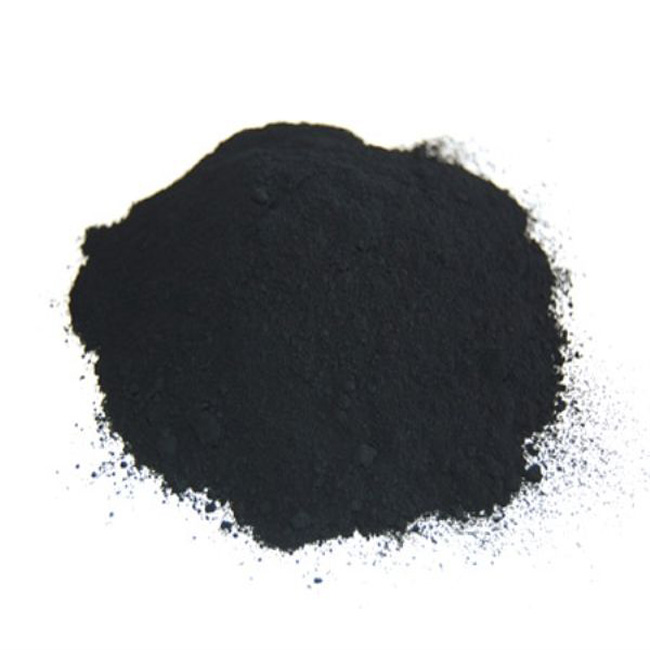
High-temperature calcination of manganese dioxide is carried out to obtain high-purity manganese dioxide.
2. Property
Physical properties: Manganese dioxide is a black solid powder with a face-centered cubic crystal structure. Under standard conditions, the density is 5.02g/cm ³。
Chemical properties: Manganese dioxide has high oxidizing and reducing properties. Under acidic conditions, manganese dioxide can react with hydrogen ions to generate manganese ions and water. Under alkaline conditions, manganese dioxide can react with hydroxide ions to produce manganese hydroxide and water. In addition, manganese dioxide can also react with some reducing substances, such as hydrogen gas, carbon monoxide, etc.
3. Application
Manganese dioxide is widely used in multiple fields as to its unique physical and chemical properties. The following are its main application areas:
Battery material: Manganese dioxide is widely used as a battery material due to its excellent electrochemical performance. In dry batteries, manganese dioxide can generate stable voltage and current when used together with carbon rods as a positive electrode material. In addition, manganese dioxide is also used to prepare positive electrode materials for rechargeable batteries, such as lithium manganese dioxide in lithium-ion batteries.

Catalyst: Manganese dioxide can catalyze various reactions, such as the oxidation of alcohols, hydrocarbons, and carbon monoxide. Manganese dioxide catalysts have the advantages of high activity, good stability, and low cost and are, therefore, widely used in industry.
Pigments and coatings: Manganese dioxide can be made into black pigments and coatings, widely used in fields such as architecture, furniture, and automobiles. Various colors and textures can be prepared to meet different needs when mixed with other pigments.
Other fields: Besides the abovementioned application, manganese dioxide can prepare magnetic materials, electronic components, etc. With the continuous development of technology, its application prospects will be even broader.
About RBOSCHCO
RBOSCHCO is a trusted global chemical material supplier & manufacturer with over 12 years experience in providing super high-quality chemicals and Nanomaterials. The company export to many countries, such as USA, Canada, Europe, UAE, South Africa, Tanzania,Kenya,Egypt,Nigeria,Cameroon,Uganda,Turkey,Mexico,Azerbaijan,Belgium,Cyprus,Czech Republic, Brazil, Chile, Argentina, Dubai, Japan, Korea, Vietnam, Thailand, Malaysia, Indonesia, Australia,Germany, France, Italy, Portugal etc. As a leading nanotechnology development manufacturer, RBOSCHCO dominates the market. Our professional work team provides perfect solutions to help improve the efficiency of various industries, create value, and easily cope with various challenges. If you are looking for MnO2 powder, please send an email to: sales1@rboschco.com
Tungsten disulfide is a chemical substance with significant application value.
1. Properties of tungsten disulfide
Tungsten disulfide is a black-gray solid with the molecular formula WS2. It has metallic luster, semiconductor properties, and high chemical and thermal stability. The molecular structure of tungsten disulfide consists of two sulfur atoms and a large radius tungsten atom, where a six-membered ring is formed between the sulfur atoms, and the tungsten atom is located at the center of the ring. This unique structure gives tungsten disulfide high electron mobility and conductivity.
2. Preparation of tungsten disulfide
The preparation methods of tungsten disulfide mainly include chemical vapor deposition (CVD) and high-temperature synthesis. CVD is the most commonly used preparation method, which generates tungsten disulfide thin films by reacting gases containing tungsten and sulfur at high temperatures. The high-temperature synthesis rule is to heat a mixture of tungsten and sulfur powder under high temperature and pressure conditions to generate tungsten disulfide crystals.
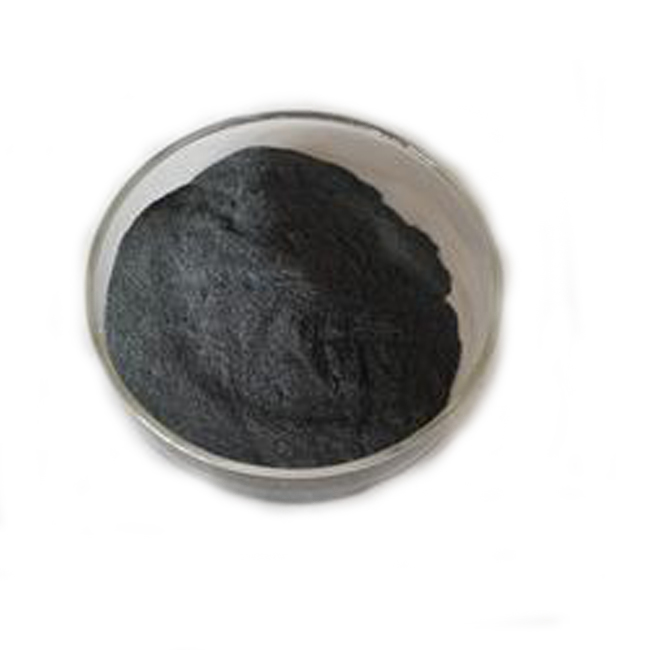
3. Application of tungsten disulfide
In the field of electronic devices
Tungsten disulfide is widely used in electronic devices due to its semiconductor properties and high electron mobility. It can be used as an electrode material for electronic components, such as the gate material for field-effect transistors (FETs) and the electrode material for solar cells. In addition, tungsten disulfide can also be used as a storage medium for electronic memory materials, such as phase change memory (PCRAM).
Lubrication field
Tungsten disulfide has excellent lubricating properties and can be used as an additive in lubricants and greases. Under high temperature and high load conditions, tungsten disulfide can form a dense protective film, reduce friction and wear, and improve equipment's operational efficiency and lifespan.
Catalyst field
Tungsten disulfide can be used as a catalyst and catalyst carrier and is widely used in petrochemicals and environmental protection fields. In petrochemicals, tungsten disulfide can serve as a catalyst to improve the efficiency and yield of petroleum cracking. Tungsten disulfide can be a catalyst for treating waste gas and wastewater in environmental protection.
Material coating field
Tungsten disulfide is widely used in material coatings due to its good hardness, wear resistance, and excellent corrosion resistance. It can be used as a coating material for metal surface protection, wear resistance, and reduction. For example, mechanical equipment used in marine environments can be protected with tungsten disulfide coatings.
Tungsten disulfide has a wide range of applications, including lubrication, catalysts, and material coatings mentioned above, as well as the following:
Catalyst carrier: Tungsten disulfide has high hardness, wear resistance, and excellent corrosion resistance and can be used as a catalyst carrier in fields such as petrochemicals and environmental protection.
Electronic materials: Tungsten disulfide has excellent electronic conductivity and stability and can be used to prepare electrode materials, electronic devices, and semiconductor materials.
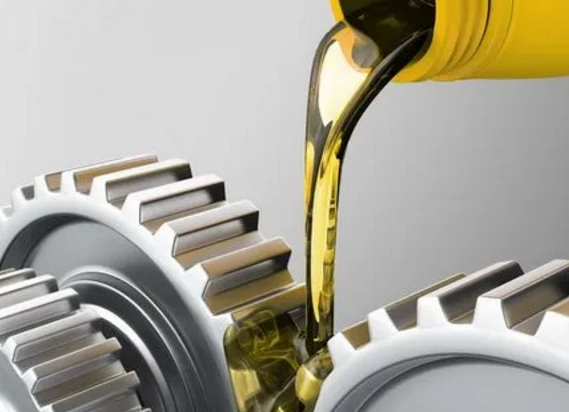
Aerosol: Tungsten disulfide is often used as an ultrafine scale crystal for aerosols, which has the advantages of simple preparation process equipment, no environmental pollution, and safe and reliable operation.
Lubrication of mechanical components: Tungsten disulfide can be used as a forging and stamping lubricant in combination with other materials, which can extend the service life of molds and improve product smoothness.
Self-lubricating components: Tungsten disulfide can be used as a filling material in combination with polytetrafluoroethylene and nylon to make self-lubricating components.
About RBOSCHCO
RBOSCHCO is a trusted global chemical material supplier & manufacturer with over 12 years experience in providing super high-quality chemicals and Nanomaterials. The company export to many countries, such as USA, Canada, Europe, UAE, South Africa, Tanzania,Kenya,Egypt,Nigeria,Cameroon,Uganda,Turkey,Mexico,Azerbaijan,Belgium,Cyprus,Czech Republic, Brazil, Chile, Argentina, Dubai, Japan, Korea, Vietnam, Thailand, Malaysia, Indonesia, Australia,Germany, France, Italy, Portugal etc. As a leading nanotechnology development manufacturer, RBOSCHCO dominates the market. Our professional work team provides perfect solutions to help improve the efficiency of various industries, create value, and easily cope with various challenges. If you are looking for WS2 powder, please send an email to: sales1@rboschco.com
Tantalum oxide is a compound with a high melting point, high chemical stability, and excellent electrical properties, widely used in fields such as electronics, optics, ceramics, etc.
1. Physical and chemical properties of tantalum oxide
Tantalum oxide (Ta2O5) is a white or light yellow powder with a high melting point (2980 ℃), high hardness (Mohs hardness of 7.5), and high chemical stability. Its molecular formula is Ta2O5, with a molecular weight of 337.83. Tantalum oxide is insoluble in water at room temperature but can dissolve in acidic and alkaline solutions.
2. Preparation method of tantalum oxide
Direct synthesis method
The direct synthesis method involves reacting tantalum powder with high-temperature oxygen to produce tantalum oxide. This method is simple but requires high-temperature conditions and a slow reaction rate.
Vapor deposition method
The vapor deposition method reacts tantalum source gas with oxygen to generate tantalum oxide thin films at low temperatures. This method has high purity and density characteristics and is suitable for preparing high-performance tantalum oxide films.
Sol-gel method
The Sol-gel process is a method of preparing tantalum oxide through the Sol gel process. This way has the advantages of simple operation and low cost, but it needs to control conditions such as gel time and temperature.
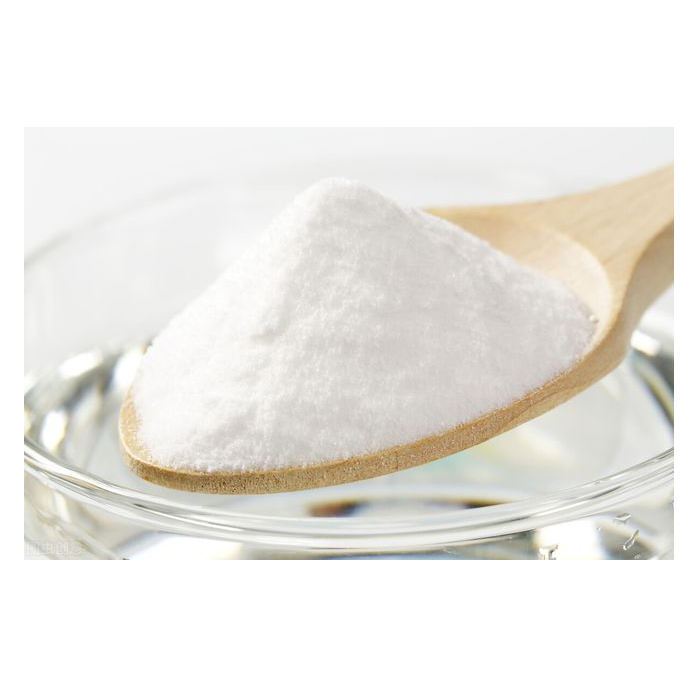
3. Application fields of tantalum oxide
Electronic field
As a high-performance dielectric material, Tantalum oxide has a wide range of applications in electronics. For example, in manufacturing thin film capacitors, tantalum oxide is used as a dielectric layer, which has advantages such as high dielectric constant, low loss, and high stability. In addition, tantalum oxide can manufacture components such as gates and electrodes in electronic devices.
Optical field
Tantalum oxide also has extensive applications in the field of optics. For example, tantalum oxide is used as a reflector or window component in optical waveguide devices, with advantages such as high reflectivity and low loss. In addition, tantalum oxide can also be used to manufacture optical thin films, gratings and other optical components.
Ceramic field
Tantalum oxide also has extensive applications in the field of ceramics. For example, in high-temperature ceramic materials, tantalum oxide can be used as an additive or reinforcing agent to improve the material's mechanical properties and high-temperature resistance. In addition, tantalum oxide can also be used to manufacture high-performance ceramic products such as ceramic blades and bearings.
4. Summary and Outlook
As a high-performance compound, Tantalum oxide has broad application prospects in fields such as electronics, optics, and ceramics. With the continuous progress of technology and the expansion of applications, the demand for tantalum oxide will continue to increase. Therefore, strengthening the research on the preparation technology and expanding the application field of tantalum oxide will be important research directions in the future. Meanwhile, with the continuous improvement of environmental awareness and the implementation of sustainable development strategies, the preparation technology of green environmental protection will also become an essential trend for future development.
About RBOSCHCO
RBOSCHCO is a trusted global chemical material supplier & manufacturer with over 12 years experience in providing super high-quality chemicals and Nanomaterials. The company export to many countries, such as USA, Canada, Europe, UAE, South Africa, Tanzania,Kenya,Egypt,Nigeria,Cameroon,Uganda,Turkey,Mexico,Azerbaijan,Belgium,Cyprus,Czech Republic, Brazil, Chile, Argentina, Dubai, Japan, Korea, Vietnam, Thailand, Malaysia, Indonesia, Australia,Germany, France, Italy, Portugal etc. As a leading nanotechnology development manufacturer, RBOSCHCO dominates the market. Our professional work team provides perfect solutions to help improve the efficiency of various industries, create value, and easily cope with various challenges. If you are looking for Ta2O5 powder, please send an email to: sales1@rboschco.com
Copper oxide CuO is a standard copper oxide with a wide range of applications. It is a semiconductor material that can manufacture electronic devices and batteries. In addition, copper oxide is also used to manufacture catalysts, pigments, and other special oxides. Therefore, understanding copper oxide's production process and technology is crucial for meeting the market demand in these application areas.
Production process
There are two main production methods for copper oxide: direct oxidation, which prepares copper oxide by directly oxidizing copper ore or copper metal, and indirect oxidation, which prepares copper oxide by reducing copper-containing compounds.
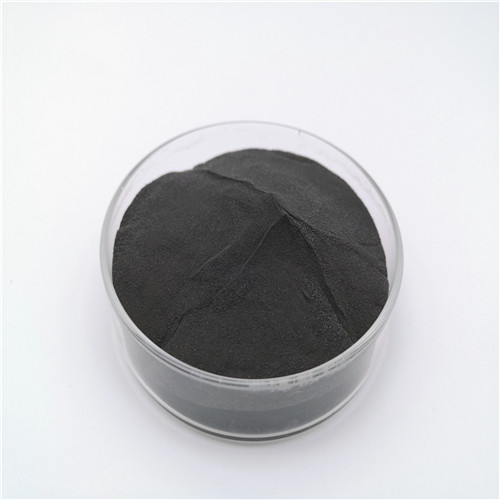
Direct oxidation method
Direct oxidation is one of the most commonly used methods for producing copper oxide. This process mainly includes steps such as crushing, screening, grinding, leaching, and oxidation:
The copper ore is crushed into particles of appropriate size and then screened and ground to remove impurities and improve the purity of copper.
Copper is dissolved from the ore through a chemical leaching process to form copper ions.
Copper ions are oxidized to copper oxide through oxidants such as air or oxygen.
The advantages of the direct oxidation method are a mature process, simple operation, and low cost. However, the direct oxidation method also has some drawbacks, such as low ore grade, high energy consumption, and severe environmental pollution. Therefore, the production process needs to take corresponding measures to reduce energy consumption and environmental pollution.
Indirect oxidation method
The indirect oxidation method is a method of preparing copper oxide by reducing copper-containing compounds. This process mainly includes steps such as dissolution, pH adjustment, reduction, and oxidation:
Dissolve the copper-containing compound in an appropriate solvent to form copper ions.
By adjusting the pH value, copper ions precipitate into copper hydroxide.
Copper hydroxide is reduced to metallic copper using reducing agents such as formaldehyde or acetylene.
The metal copper is oxidized to copper oxide through an oxidant.
The advantage of the indirect oxidation method is that high-purity copper oxide can be obtained by controlling reaction conditions. In addition, the indirect oxidation method can also treat copper-containing waste and achieve resource recovery and utilization. However, the indirect oxidation method also has some drawbacks, such as the high cost of using many organic solvents and reducing agents in production.
Production technology
Boiling furnace roasting technology
Boiling furnace roasting technology is a commonly used method for producing copper oxide. This technology involves adding copper ore to a boiling furnace and reacting with oxygen at high temperatures to produce copper oxide. The advantages of fluidized bed furnace roasting technology are high energy utilization, large production capacity, and good product quality. However, boiling furnace roasting technology has drawbacks, such as high equipment investment, high maintenance costs, and significant environmental pollution.
Spray drying technology
Spray drying technology is a method to transform copper-containing solutions into copper oxide powder through spray drying equipment. The advantage of this technology is that it can complete the drying process in a short time, with high product purity and uniform particle size. In addition, the spray drying technology can also be used to treat copper-containing waste materials and realize the recycling of resources. However, spray drying technology has shortcomings, such as significant equipment investment, high operating costs, and greater environmental pollution.
Chemical vapor deposition technology
Chemical vapor deposition technology converts copper-containing gases into copper oxide through chemical reactions at high temperatures. The advantages of this technology are the ability to obtain high-purity copper oxide, controllable particle size, and environmentally friendly production. However, chemical vapor deposition technology has drawbacks, such as high equipment investment, operating costs, and low production efficiency.
About RBOSCHCO
RBOSCHCO is a trusted global chemical material supplier & manufacturer with over 12 years experience in providing super high-quality chemicals and Nanomaterials. The company export to many countries, such as USA, Canada, Europe, UAE, South Africa, Tanzania,Kenya,Egypt,Nigeria,Cameroon,Uganda,Turkey,Mexico,Azerbaijan,Belgium,Cyprus,Czech Republic, Brazil, Chile, Argentina, Dubai, Japan, Korea, Vietnam, Thailand, Malaysia, Indonesia, Australia,Germany, France, Italy, Portugal etc. As a leading nanotechnology development manufacturer, RBOSCHCO dominates the market. Our professional work team provides perfect solutions to help improve the efficiency of various industries, create value, and easily cope with various challenges. If you are looking for CuO powder, please send an email to: sales2@nanotrun.com
Boron nitride is a super strong material with extremely high heat resistance and chemical stability, which has been widely used in many fields in recent years.
1. With the continuous progress of technology, people's requirements for material properties are also increasing. In this context, boron nitride has gradually attracted people's attention as a material with excellent properties. Boron nitride has a high melting point, hardness, and chemical stability, so it has many applications in many fields. This article will focus on introducing the basic properties, preparation methods, application fields, and future development trends of boron nitride to provide a reference for research and application in related fields.
2. Basic properties of boron nitride
Boron nitride is a new type of material with a hexagonal crystal structure similar to graphite, and its basic unit is the molecular structure of B12N12. This structure gives boron nitride excellent properties such as high melting point, hardness, and chemical stability. According to different preparation methods and additives, boron nitride can present different colors, including white, black, and gray. In addition, boron nitride also has excellent electrical insulation, thermal conductivity, and corrosion resistance, making it widely used in many fields.
3. Preparation method of boron nitride
The preparation methods of boron nitride mainly include high-temperature and high-pressure synthesis methods and chemical vapor deposition methods. Among them, the high-temperature and high-pressure synthesis method is one of the most commonly used preparation methods. This method synthesizes B and N elements under high temperature and pressure conditions to obtain boron nitride powder. The law of chemical vapor deposition is to react gases containing B and N elements under high-temperature conditions to generate boron nitride thin films. The particle size, purity, and morphology of boron nitride powder or film obtained by different preparation methods vary, so choosing the appropriate method according to the actual application needs is necessary.
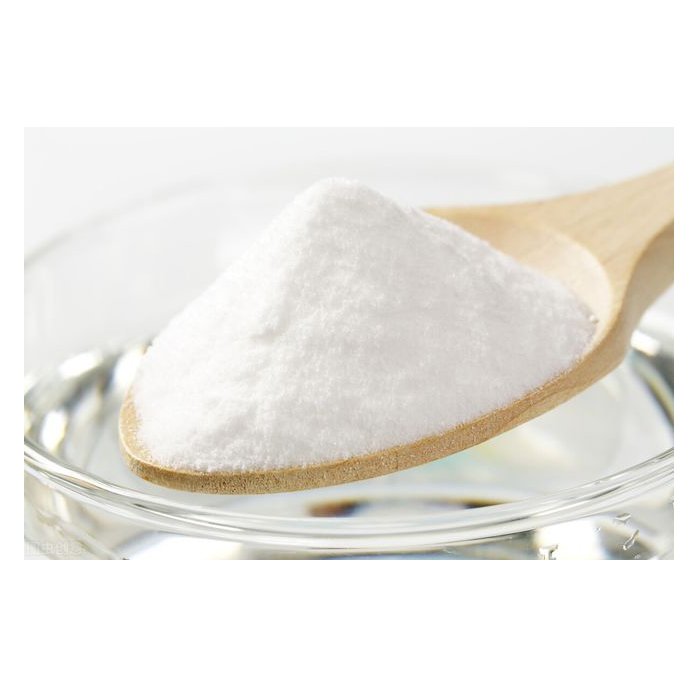
4. Application fields of boron nitride
Due to its excellent performance, boron nitride has many applications in many fields. The following are the main application areas of boron nitride:
Electronic industry: Boron nitride has excellent insulation and thermal conductivity, making it suitable for manufacturing electronic components and circuit boards. In addition, boron nitride can also be used to manufacture high-temperature electronic devices and integrated circuits.
Mechanical manufacturing: Boron nitride has high hardness and wear resistance, so it can manufacture high-strength and corrosion-resistant mechanical parts and cutting tools. In addition, boron nitride can also be used to manufacture mechanical components such as high-temperature bearings and gears.
Aerospace: Due to its excellent high-temperature resistance and chemical stability, boron nitride can manufacture components for aircraft, rockets, and other aerospace vehicles. In addition, boron nitride can also be used to manufacture high-temperature protective clothing and insulation materials.
Medical field: Boron nitride has excellent biocompatibility and chemical stability, making it suitable for manufacturing medical devices and biomaterials. For example, boron nitride can manufacture medical devices such as artificial joints and teeth.
Other fields: Boron nitride can manufacture optical components and coatings besides the abovementioned application. In addition, due to its excellent electrical insulation and thermal conductivity, boron nitride can also be used to manufacture heat sinks for power equipment and electronic components.
5. The Future Development Trends of Boron Nitride
With the continuous progress of technology and the increasing demand for applications, boron nitride as a super strong material will be widely used and developed. The following are the future development trends of boron nitride:
Research and development of new materials: With the continuous progress of technology and the increasing demand for applications, people will continue to develop new types of boron nitride materials to meet the needs of different fields. For example, they are improving the performance of boron nitride or developing new functional characteristics by adding other elements or using different preparation methods.
The application of nanotechnology: With the continuous development of nanotechnology, people will delve deeper into the nanostructure and performance relationship of boron nitride. By controlling factors such as the nanostructure and morphology of boron nitride, its performance can be improved, or new functional characteristics can be developed, providing more possibilities for future technological applications.
Multidisciplinary application: With the continuous deepening and development of interdisciplinary research, people will conduct in-depth research and application of boron nitride from different perspectives. For example, boron nitride can be combined with fields such as biology, medicine, and environmental science to develop new biomaterials, drug carriers, and environmentally friendly materials.
Application of high-performance composite materials: By combining boron nitride with other materials to prepare high-performance composite materials, the advantages of boron nitride can be better utilized, and its application range can be expanded. For example, it can prepare high-strength, wear-resistant, and corrosion-resistant composite materials by combining boron nitride with materials such as metals or ceramics and applying them in mechanical manufacturing and aerospace.
Green and environmentally friendly production: With the continuous improvement of environmental awareness and the need for sustainable development, more attention will be paid to boron nitride's green and environmentally friendly production. By improving preparation methods and using environmentally friendly raw materials, environmental pollution in the production process of boron nitride can be reduced, and sustainable production can be achieved.
About RBOSCHCO
RBOSCHCO is a trusted global chemical material supplier & manufacturer with over 12 years experience in providing super high-quality chemicals and Nanomaterials. The company export to many countries, such as USA, Canada, Europe, UAE, South Africa, Tanzania,Kenya,Egypt,Nigeria,Cameroon,Uganda,Turkey,Mexico,Azerbaijan,Belgium,Cyprus,Czech Republic, Brazil, Chile, Argentina, Dubai, Japan, Korea, Vietnam, Thailand, Malaysia, Indonesia, Australia,Germany, France, Italy, Portugal etc. As a leading nanotechnology development manufacturer, RBOSCHCO dominates the market. Our professional work team provides perfect solutions to help improve the efficiency of various industries, create value, and easily cope with various challenges. If you are looking for BN powder, please send an email to: sales1@rboschco.com
Aluminum nitride (AlN) is an essential compound with high physical and chemical properties, such as good hardness, good thermal conductivity, and insulation. Therefore, aluminum nitride has extensive applications in many fields, such as electronics, ceramics, optics, etc.
1. Synthesis of aluminum nitride
There are several main methods for synthesizing aluminum nitride:
Thermal decomposition method
The thermal decomposition method is a commonly used method for synthesizing aluminum nitride. This method involves reacting metal aluminum with nitrogen at high temperatures to generate aluminum nitride. The advantage of this way is its simple operation. Still, the disadvantage is that the reaction temperature is high, a large amount of nitrogen is required, and the product purity needs to be higher.
Chemical vapor deposition method
Chemical vapor deposition is a commonly used way for preparing aluminum nitride. This method involves passing ammonia and nitrogen gas through a high-temperature reaction chamber to generate aluminum nitride. The advantage of this method is high product purity, but the disadvantage is that it requires high reaction conditions and a large amount of ammonia gas.
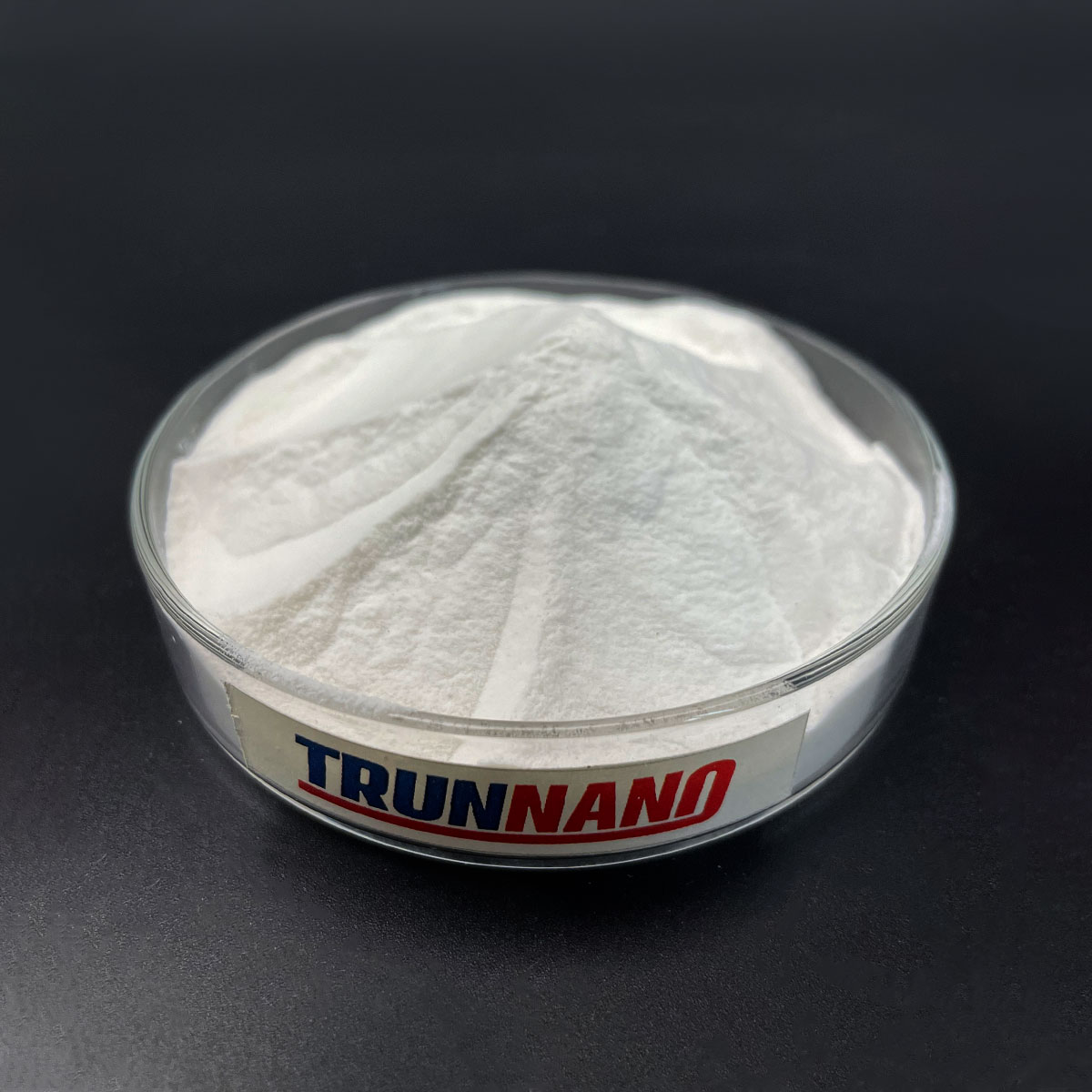
Sol-gel method
The Sol-gel way is a commonly used method to prepare aluminum nitride. The technique is to mix metal aluminum salt and organic amine in solvent to form a sol, then heat and evaporate the solvent to form a gel, and finally heat the gel to a high temperature to generate aluminum nitride. The advantage of this method is high product purity, but the disadvantage is that it requires high reaction conditions and a large amount of organic amines.
2. Properties of aluminum nitride
physical property
Aluminum nitride is a white or light yellow crystal with excellent physical properties such as high hardness, good thermal conductivity, and insulation. In addition, the melting point of aluminum nitride is relatively high, around 2200 ℃.
chemical property
Aluminum nitride is a stable compound with excellent chemical properties. At room temperature, aluminum nitride does not react with water but can react with water to generate aluminum hydroxide and ammonia gas at high temperatures. In addition, aluminum nitride can also react with oxygen at high temperatures to create alumina and nitrogen.
3. Application of aluminum nitride
Due to AlN excellent physical and chemical properties, aluminum nitride has been widely used in many fields. The following are the main application areas of aluminum nitride:
Electronic field
Aluminum nitride has a wide range of applications in the electronic field, such as integrated circuit packaging, solar cell substrates, etc. This is because aluminum nitride has excellent thermal conductivity and insulation, which can effectively solve the heat dissipation problem of electronic equipment during high-power operation. In addition, aluminum nitride can also be used as a packaging material for electronic equipment, improving the reliability and stability of the equipment.
Ceramic field
Aluminum nitride has many applications in ceramics, such as ceramic cutting tools, ceramic bearings, etc. This is because aluminum nitride has high hardness and good wear resistance, which will improve the performance and lifespan of ceramic materials. In addition, aluminum nitride can be used as an additive in ceramic materials to improve their processing and mechanical properties.
Optical field
Aluminum nitride has a wide range of applications in the optical field, such as lasers, fiber optic connectors, etc. This is because aluminum nitride has high transparency and refractive index, making it a transparent material for optical components. In addition, aluminum nitride can be used as a visual coating material to improve the performance and stability of optical components.
About RBOSCHCO
RBOSCHCO is a trusted global chemical material supplier & manufacturer with over 12 years experience in providing super high-quality chemicals and Nanomaterials. The company export to many countries, such as USA, Canada, Europe, UAE, South Africa, Tanzania,Kenya,Egypt,Nigeria,Cameroon,Uganda,Turkey,Mexico,Azerbaijan,Belgium,Cyprus,Czech Republic, Brazil, Chile, Argentina, Dubai, Japan, Korea, Vietnam, Thailand, Malaysia, Indonesia, Australia,Germany, France, Italy, Portugal etc. As a leading nanotechnology development manufacturer, RBOSCHCO dominates the market. Our professional work team provides perfect solutions to help improve the efficiency of various industries, create value, and easily cope with various challenges. If you are looking for AlN powder, please send an email to: sales1@rboschco.com




